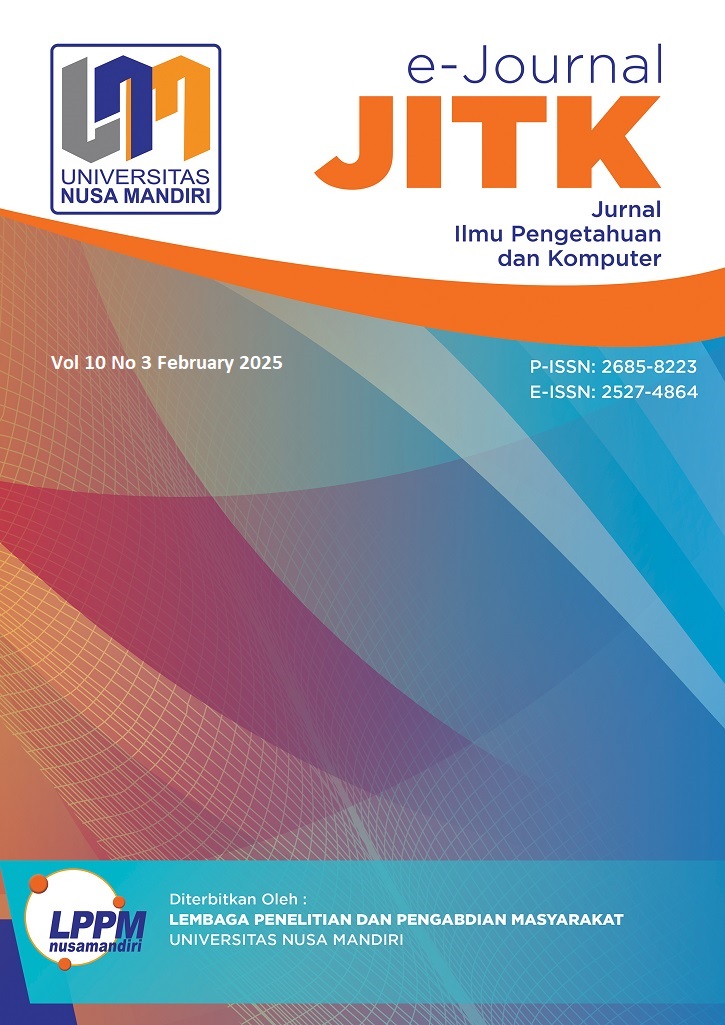THE ROLE OF AI (ARTIFICIAL INTELLIGENCE) FOR ALZHEIMER: A SYSTEMATIC REVIEW
DOI:
https://doi.org/10.33480/jitk.v10i3.6154Keywords:
alzheimer’s disease, artificial intelligence, deep learning, machine learningAbstract
Alzheimer's disease (AD) is the most common type of dementia and represents a significant global health problem due to its profound impact on patients' quality of life and the heavy burden it places on health care. Alzheimer's is characterized by a progressive decline in cognitive function and memory, ultimately disrupting daily activities and leading to dependence on long-term care. This systematic literature review aims to explore the role of AI in diagnosing and managing Alzheimer’s disease. The method used in this study refers to the PICO framework to highlight various studies on the role of AI for Alzheimer's disease. Recent breakthroughs in the field of artificial intelligence (AI), particularly machine learning (ML) and deep learning, offer promising innovative approaches to improve diagnosis, monitoring, and understanding of Alzheimer's disease.
Downloads
References
V. Pons and S. Rivest, “Targeting Systemic Innate Immune Cells as a Therapeutic Avenue for Alzheimer Disease,” Pharmacological Reviews, vol. 74, no. 1, pp. 1–17, Jan. 2022, doi: 10.1124/pharmrev.121.000400.
A. P. Bestari, “Mengenal Demensia Alzheimer,” Kemenkes RI, 2023.
World Health Organization, “Dementia,” World Health Organization, 2023. [Online]. Available: https://www.who.int/news-room/fact-sheets/detail/dementia.
I. Veneziani et al., “Applications of Artificial Intelligence in the Neuropsychological Assessment of Dementia: A Systematic Review,” Journal of Personalized Medicine, vol. 14, no. 1, p. 113, Jan. 2024, doi: 10.3390/jpm14010113.
A.-M. Alhejaily, “Artificial intelligence in healthcare (Review),” Biomedical Reports, vol. 22, no. 1, Nov. 2024, doi: 10.3892/br.2024.1889.
X. Zhao, C. K. E. Ang, U. R. Acharya, and K. H. Cheong, “Application of Artificial Intelligence techniques for the detection of Alzheimer’s disease using structural MRI images,” Biocybernetics and Biomedical Engineering, vol. 41, no. 2, pp. 456–473, Apr. 2021, doi: 10.1016/j.bbe.2021.02.006.
M. Kale et al., “AI-driven innovations in Alzheimer’s disease: Integrating early diagnosis, personalized treatment, and prognostic modelling,” Ageing Research Reviews, vol. 101, p. 102497, Nov. 2024, doi: 10.1016/j.arr.2024.102497.
H. Hampel et al., “Omics sciences for systems biology in Alzheimer’s disease: State-of-the-art of the evidence,” Ageing Research Reviews, vol. 69, p. 101346, Aug. 2021, doi: 10.1016/j.arr.2021.101346.
M.-S. Hosseini, F. Jahanshahlou, M. A. Akbarzadeh, M. Zarei, and Y. Vaez-Gharamaleki, “Formulating research questions for evidence-based studies,” Journal of Medicine, Surgery, and Public Health, vol. 2, p. 100046, Apr. 2024, doi: 10.1016/j.glmedi.2023.100046.
C. E. Wisely et al., “Convolutional neural network to identify symptomatic Alzheimer’s disease using multimodal retinal imaging,” British Journal of Ophthalmology, vol. 106, no. 3, pp. 388–395, 2022, doi: 10.1136/bjophthalmol-2020-317659.
J. Sun, Y. Liu, H. Wu, P. Jing, and Y. Ji, “A novel deep learning approach for diagnosing Alzheimer’s disease based on eye-tracking data,” Frontiers in Human Neuroscience, vol. 16, Sep. 2022, doi: 10.3389/fnhum.2022.972773.
G. F. Saraceno, D. M. Abrego-Guandique, R. Cannataro, M. C. Caroleo, and E. Cione, “Machine Learning Approach to Identify Case-Control Studies on ApoE Gene Mutations Linked to Alzheimer’s Disease in Italy,” BioMedInformatics, vol. 4, no. 1, pp. 600–622, 2024, doi: 10.3390/biomedinformatics4010033.
E. H. Leonardsen et al., “Constructing personalized characterizations of structural brain aberrations in patients with dementia using explainable artificial intelligence,” npj Digital Medicine, vol. 7, no. 1, May 2024, doi: 10.1038/s41746-024-01123-7.
C. Fabrizio, A. Termine, C. Caltagirone, and G. Sancesario, “Artificial Intelligence for Alzheimer’s Disease: Promise or Challenge?,” Diagnostics, vol. 11, no. 8, p. 1473, Aug. 2021, doi: 10.3390/diagnostics11081473.
J. Oyeniyi and P. Oluwaseyi, "Emerging trends in AI-powered medical imaging: enhancing diagnostic accuracy and treatment decisions," International Journal of Enhanced Research In Science Technology & Engineering, vol. 13, no. 4, p. 81-94, 2024, doi: 10.55948/IJERSTE.2024.0412.
D. Bearden et al., “Retinal imaging to detect Alzheimer disease: machine learning model,” Ophthalmology Times Europe, vol. 19, no. 1, 2023.
M. R. Readman, M. Polden, M. C. Gibbs, L. Wareing, and T. J. Crawford, “The Potential of Naturalistic Eye Movement Tasks in the Diagnosis of Alzheimer’s Disease: A Review,” Brain Sciences, vol. 11, no. 11, p. 1503, Nov. 2021, doi: 10.3390/brainsci11111503.
Downloads
Published
How to Cite
Issue
Section
License
Copyright (c) 2025 Ester Rumaseb, Sulistiyani Sulistiyani, Lalu Guntur Payasan

This work is licensed under a Creative Commons Attribution-NonCommercial 4.0 International License.











-a.jpg)
-b.jpg)














